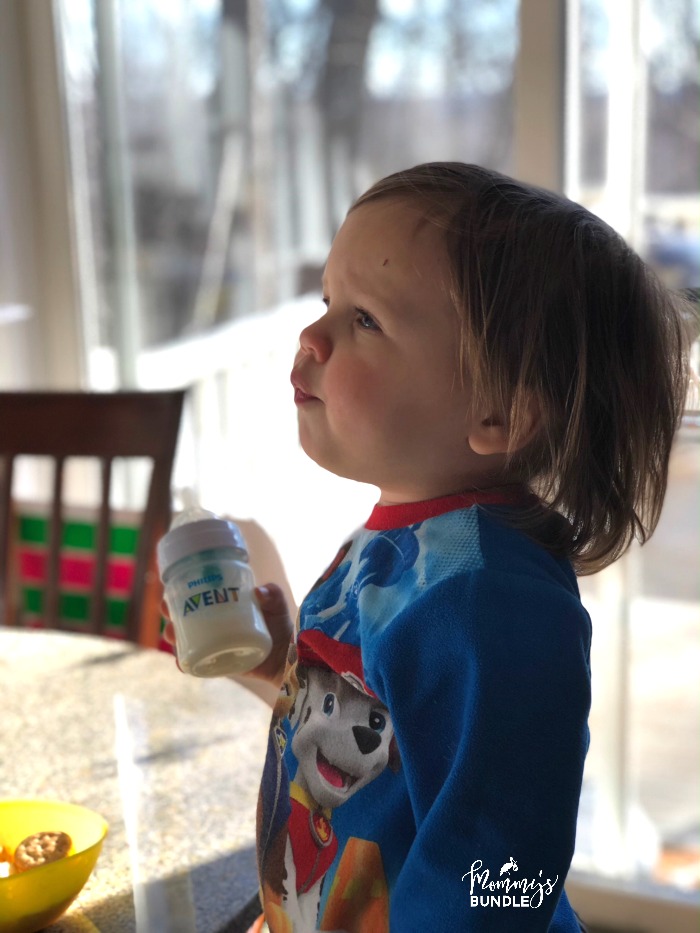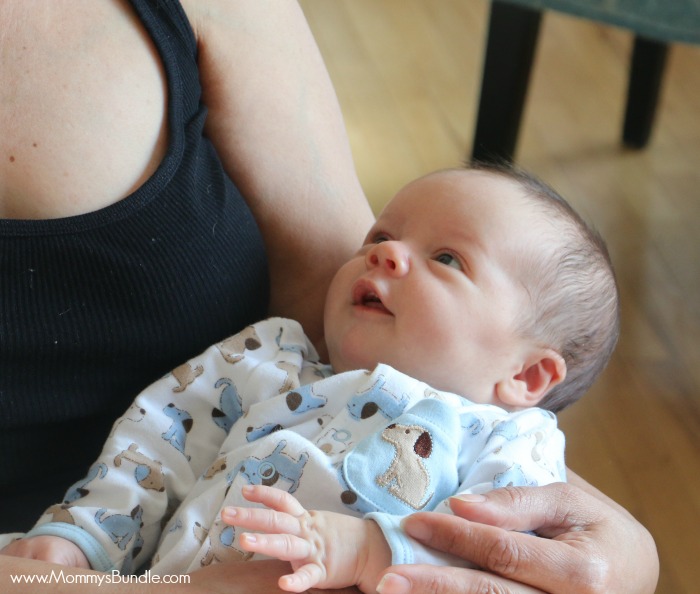Inside: Treating colicky babies is a concern many mothers face, whether breastfeeding or formula feeding. However, as a breastfeeding mom you might assume that gas isn’t to blame when most of the time it is. Learn the signs of colic and gas-related issues and how to prevent them as a breastfeeding mother transitioning to bottles.
This post was sponsored by Philips Avent as part of an Influencer Activation for Influence Central and all opinions expressed in my post are my own.
I remember feeling a bit lost as a first-time mom dealing with the incessant cries of my newborn baby. I would feed him, burp him, change him and then struggle to find a solution for the incessant cries in between feedings. I was certain that one or two big burps surely meant it couldn’t be a gas issue. But when the cries persisted I was baffled.
This is a scenario many breastfeeding moms face. We think gas issues are restricted to formula-fed babies, so rule that out as a possible symptom when looking to treat colic. But it’s important to look deeper when you’re a mom trying to understand why your baby won’t stop crying.
What is Colic?
According to the experts, colic is inconsolable crying in an otherwise healthy and well-fed baby. Babies with colic can cry more than 3 hours a day, 3 days a week for more than 3 weeks.
The differentiating criteria is that there is no cure for colic — so nothing you do to console baby seems to provide relief.
So technically if there is a specific culprit for why baby is inconsolable – like gas – it’s not considered colic. Gas is typically a symptom of colic but not the cause. Meaning, if you have a constantly fussing baby he or she may appear that way due to a specific issue, like gas.
As a breastfeeding mom of three little boys, I learned that when my boys appeared to be colicky it was actually gas at the root!
So it got me thinking, what causes gas in breastfed babies and how can I treat it?

Gas Symptoms in Babies
When your baby appears colicky, first look for the signs of gas which often include things like:
- Excessive fussiness
- Spitting up often
- Burping (more than one or two times)
- Passing Gas
- Pulling up legs towards the body
- Bloated or hard abdomen
Gas pain in newborn babies is generally common and can increase in severity as babies begin solid foods or experience discomfort from food passed through after nursing. When baby is breastfeeding or bottle-feeding the swallowing of air bubbles can exacerbate the condition even more, so it’s important for moms to find ways to reduce the excess air that remains trapped. (The Philips Avent Anti-colic bottle with AirFree vent is one solution that works really well — I get into detail below!)
Treating Gas in Breastfed Babies
Oversupply Issues
One issue that breastfeeding moms may face that leads to gas is an oversupply of milk. While many moms struggle with their milk supply, producing an abundance of milk can also be somewhat of a problem if baby is taking in more milk than he can handle at any given moment. When too much milk is taken in from an overactive milk duct or a forceful sucking, baby can swallow more air leading to gassiness.
I experienced some of this to a small degree, as my kids would often prefer one breast over the other — the one breast that had a more active letdown. To remedy the issue, I found that feeding while lying down on my back helped regulate airflow. This way I was also able to control how fast or slow baby fed.
Some moms also find that switching breasts frequently can often help.
Burping
One of the most obvious ways moms can reduce gas in a fussy or colicky baby is to burp them. It’s important to burp baby after feeding from each breast and often — not just at the end of a feeding session. For me, I found that with an overactive milk supply on one side, I had to adjust my latch or interrupt the feeding even on one breast to burp when I felt baby was taking in milk to quickly. It’s tough to do but a good way that helped relieve discomfort.
I also found that one burp didn’t mean I was done. Oftentimes, kids have gas bubbles stuck deep within and need a little extra help getting it all out. As a three month old, my middle child would have what seemed like outbursts after I fed/burped so I was often struggling for hours to help him release that gas. It amazed me when it took three or more burps to calm him.
Foods
Many moms who struggle with a fussy baby ask themselves, “Is my diet causing gas pains in baby?”
As breastfeeding mothers it’s a good idea to keep an eye on our diet and the foods we eat. Although there is some disagreement as to whether or not certain foods consumed by moms contribute to baby gas, when your baby’s digestive system is still developing it makes more sense to avoid any gas-inducing foods that contribute to the air inflow. This includes high-fiber veggies like broccoli, brussel sprouts, cabbage, legume, peppers; dairy foods like cow’s milk, soy, wheat, corn, eggs, peanut and even caffeine.
If you’re worried that your diet may be a factor, keep a simple journal to track what you ate and how baby felt one to three days after. This was one way I personally was able to see what foods weren’t sitting well with baby and also eliminated any possible allergens.
Bottle-feeding
Oftentimes mothers who breastfeed, must also bottle feed — whether it’s because they are returning to work and pumping or simply need to get a break and transition baby to the bottle. This is when choosing a bottle becomes of utmost importance because not just any bottle will work.
During bottle-feeding the goal is to ensure the bottle nipple is full of milk. When air enters the nipple, baby will swallow it leading to gas issues. One way to help ensure the nipple is full of milk is to tilt the bottle upright. This can be hard to do as baby swallows more and more milk and less remains in the bottle.
One way to ease the transition from breast to bottle is to find a bottle that doesn’t trap excess air into the nipple area during feedings, like the Philips Avent Anti-colic bottle with AirFree vent.

The bottle includes a unique AirFree vent that is designed to keep the nipple full of milk instead of air throughout a feeding. So even when the bottle is positioned horizontally (which would normally mean the nipple isn’t full) the vent helps baby swallow less air by drawing air away from the nipple. This reduces colic, gas and reflux, keeping baby calm and comfortable during feeding.
As a breastfeeding mother struggling to transition to bottle, I found it to be amazingly helpful. The nipple is designed to allow for a secure latch with ribbed texture to prevent collapse for uninterrupted feeding, similar to breastfeeding.
I have personally found that the Philips Avent Anti-colic bottle even works well with growing babies who might not have even had bottle aversion!
Here’s my 1.5 year-old drinking from it! After having struggled for months to get him to adapt to most bottles, this is a huge relief.

The next time you wonder why your baby appears to be colicky with no relief in sight, keep in mind these feeding tips to help reduce gas pains and other discomforts your little one may be unable to communicate directly.
You may also like:
9 Must-Try Tips for Getting a Breastfed Baby to Take a Bottle
Ana, a mom to three rambunctious little boys, has supported hundreds of thousands of women throughout their pregnancy and motherhood journey since 2012 as a blogger and maternal health advocate at MommysBundle.com.






My babies suffered colic. It was hard for us especially in the early months.I learnt with time it was the milk overflow that led them to swallow too much air and I was not burping them well.I adjusted, the spitting reduced and I learnt the technique of holding them upright for a while after feeding to allow digestion. Avent baby bottle was a Savior for us as well.
Buheri recently posted…Top 10 Best Toddler Beds of 2018 | Best Reviews